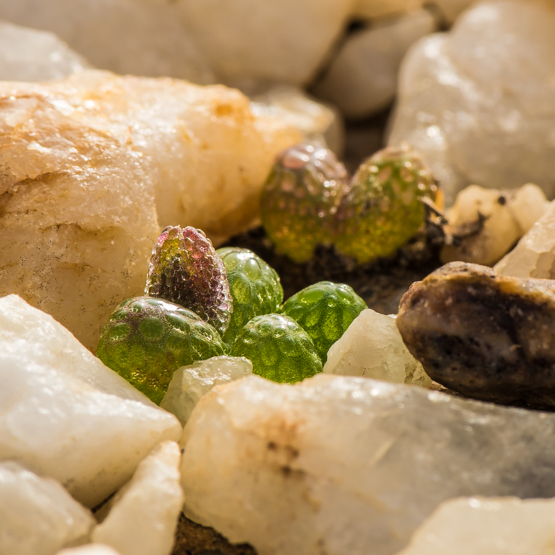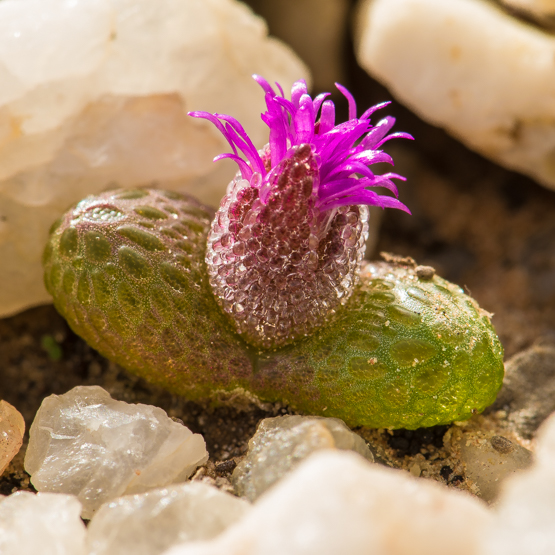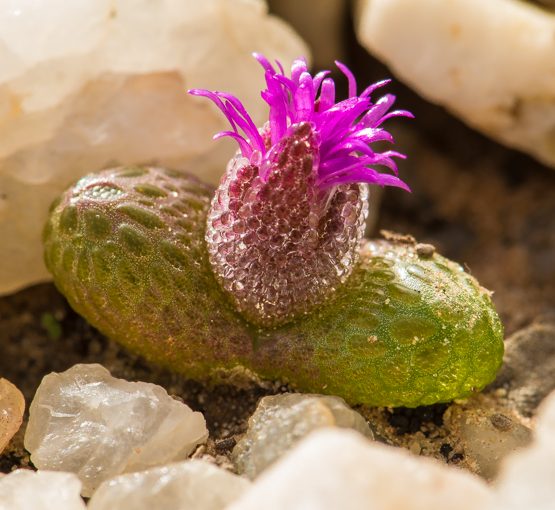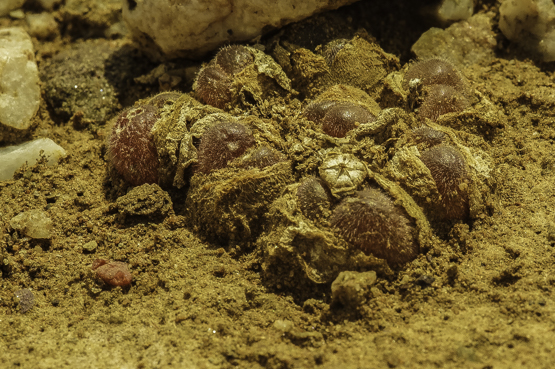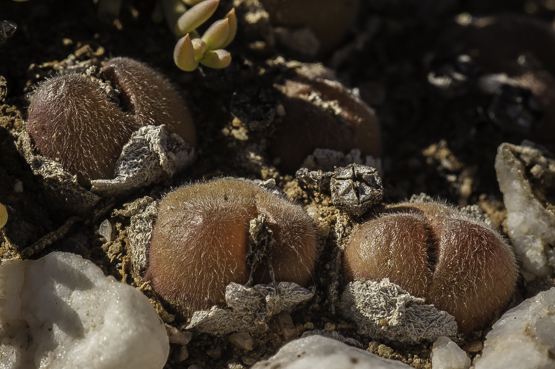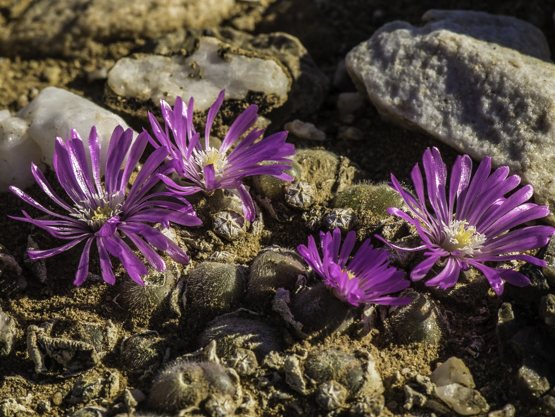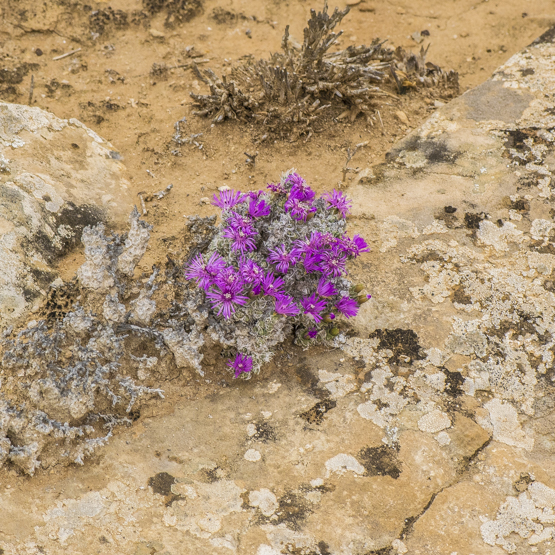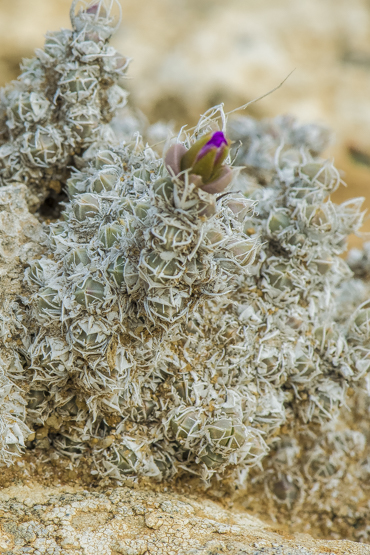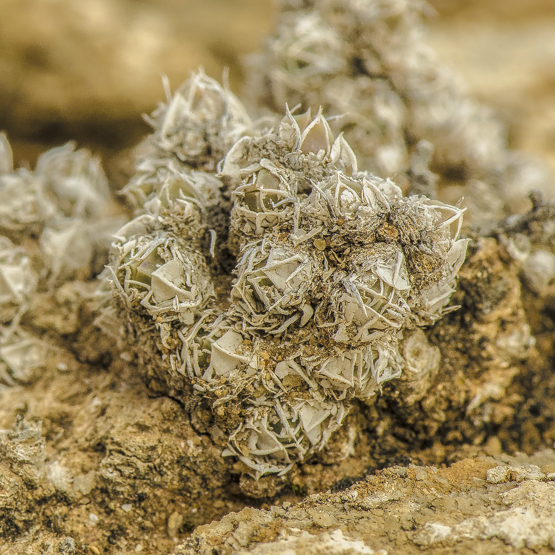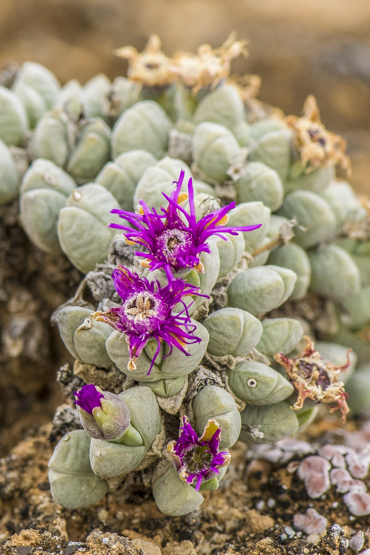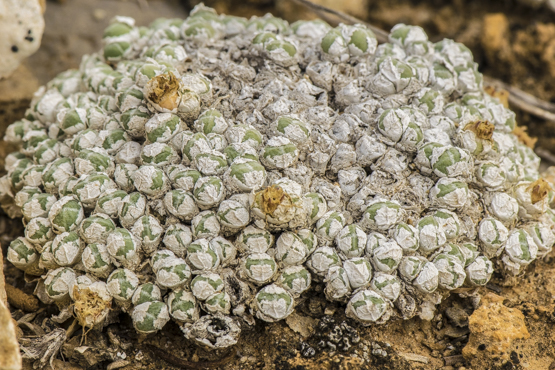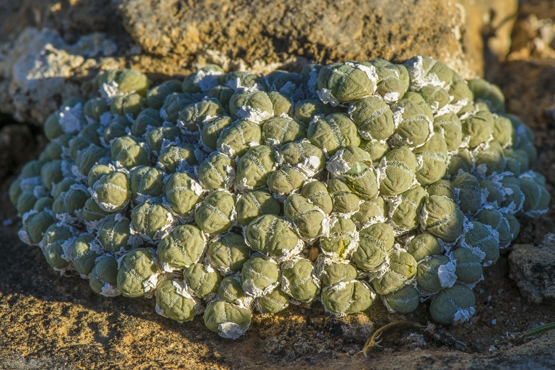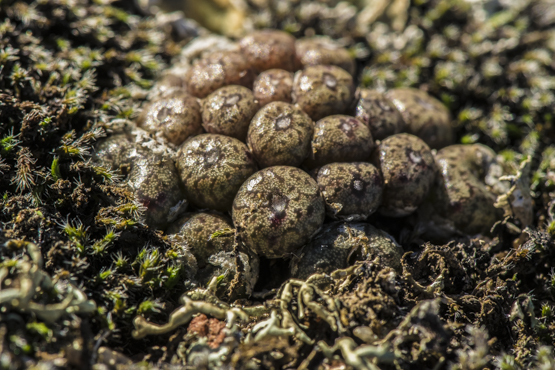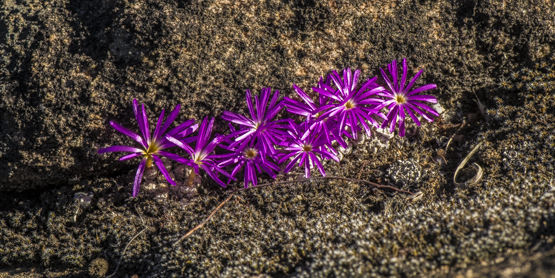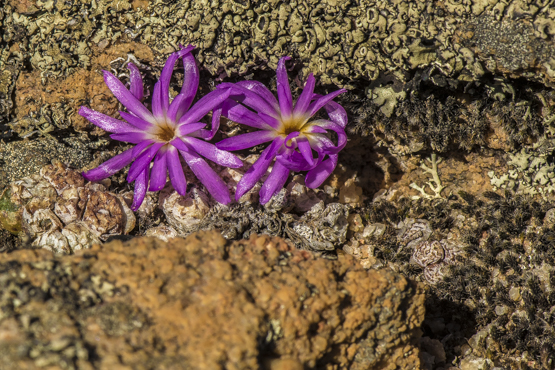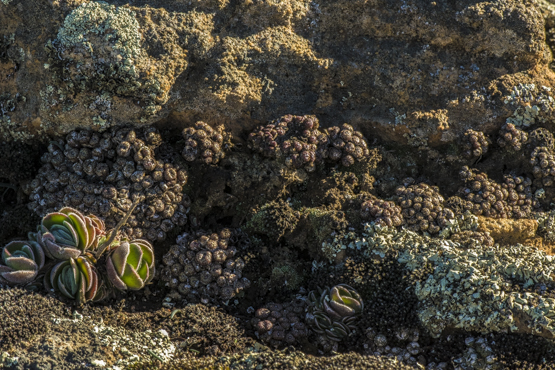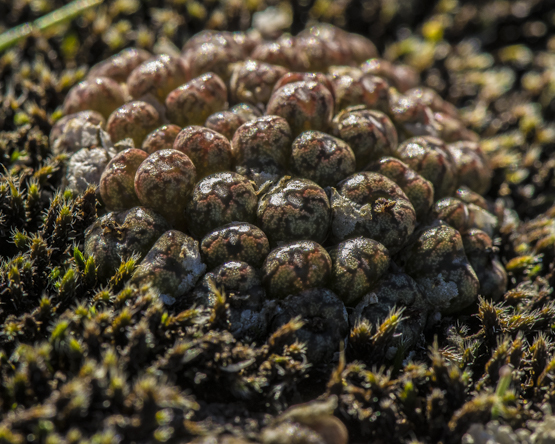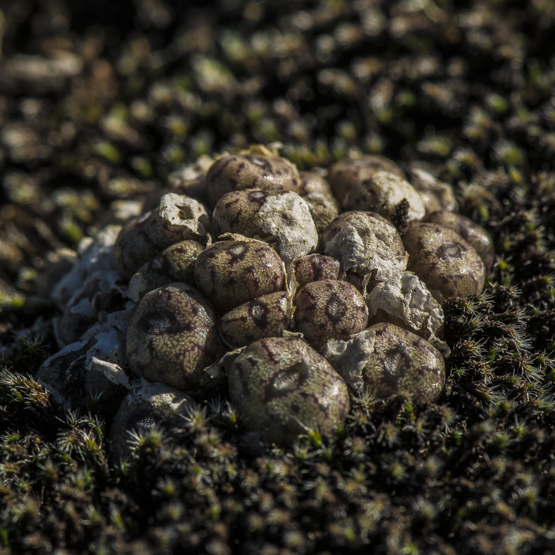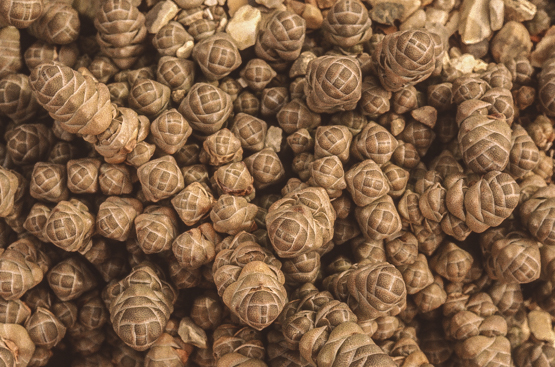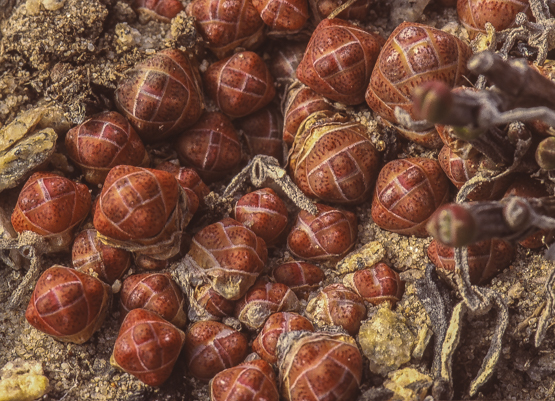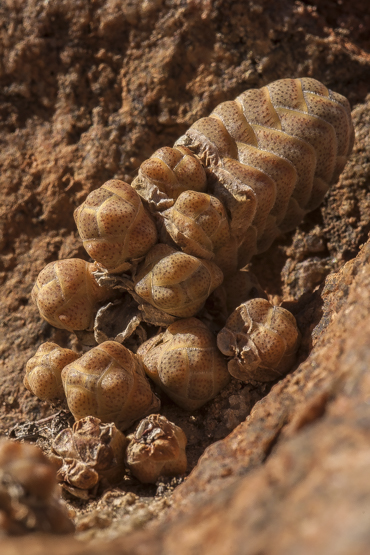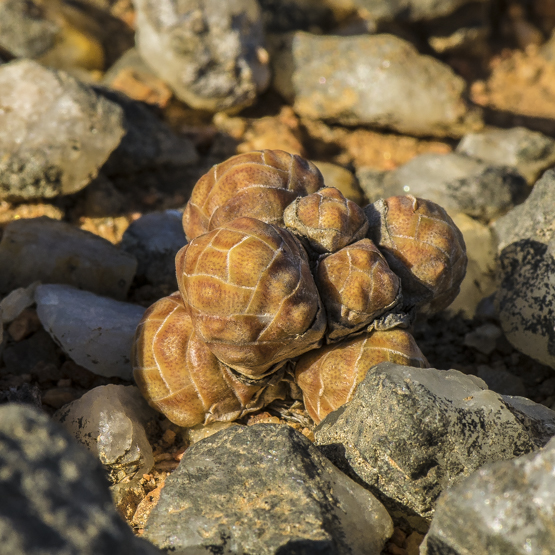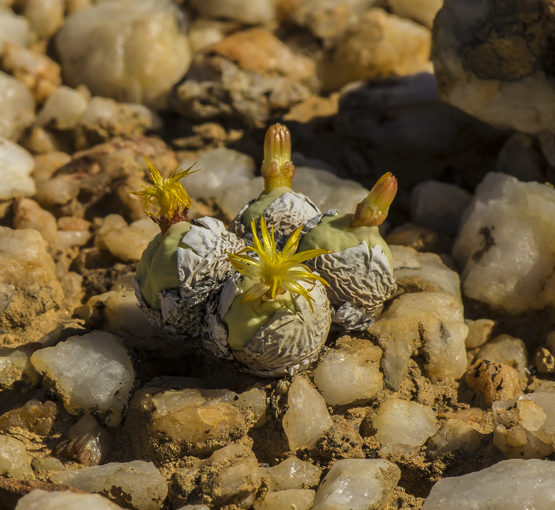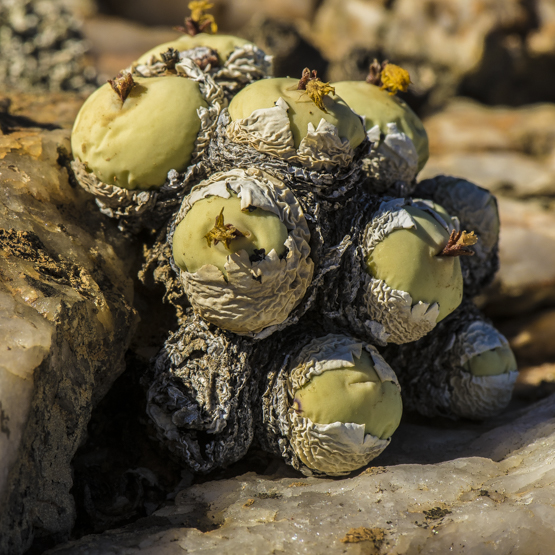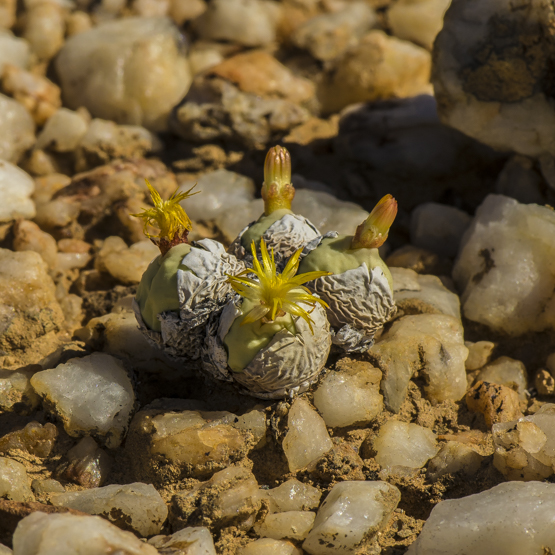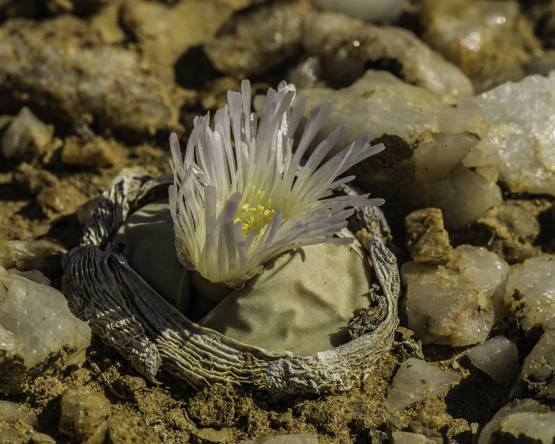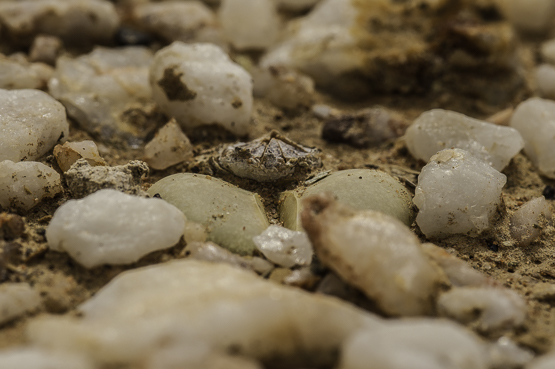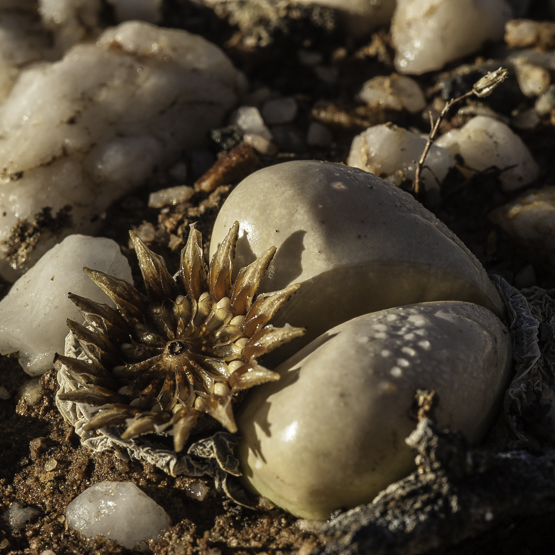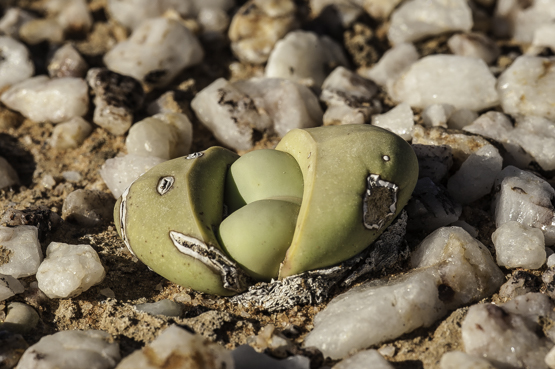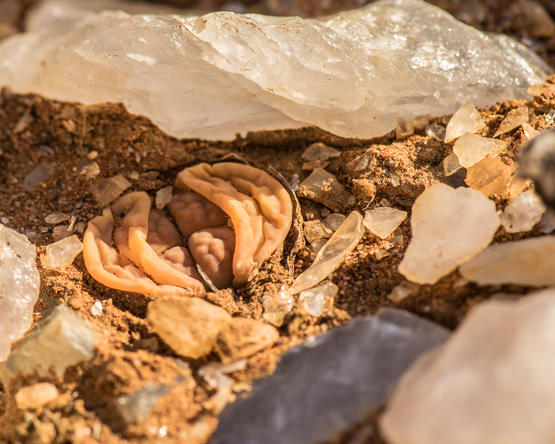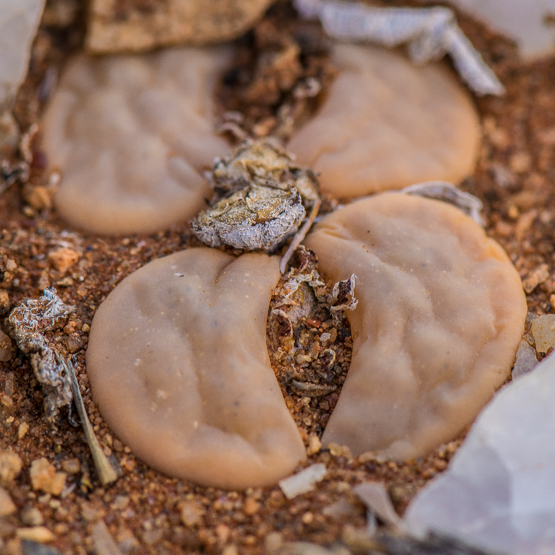There’s still a lot to learn about these intriguing dwarfs.
They are said to be short-lived and surviving lengthy droughts only as seed. According to others, in the resting state the plants are just almost invisible because at that time so little of them remains at or above ground level.
In the growing period they have highly succulent, soft and tender leaves of which the surface is covered with big cells looking like blisters.
Including the flower (to 3 cm in diameter) the plants are up to 3 cm tall. The flowering period is June to September.
The plants are only known from a few localities in the Vredendal – Vanrhynsdorp area, where they sometimes form dense groups in suitable places (hills of very saline soils covered with quartz gravel). The rainfall here is between 75 and 200 mm per year.
According to some sources, cultivation is very difficult. Others say the plants are easy to grow as long you bear in mind they are winter growers and maintain a strict resting period without any watering but with ample shade.
The pictures were taken in mid-August 2018, at about 10.30 in the morning, unfortunately too early for showing the flowers (they only open around noon).
